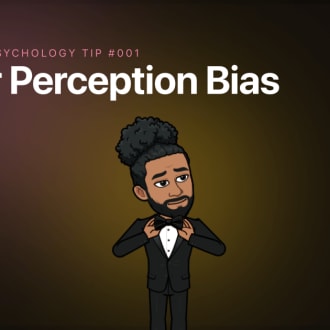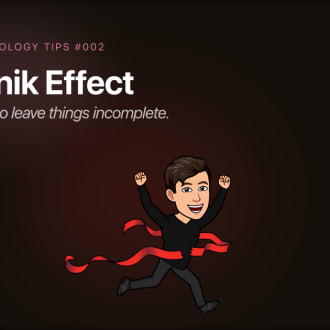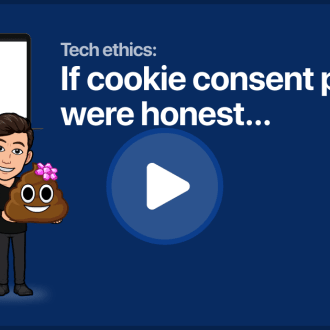The Best of Growth.Design
10+ most popular Growth.Design articles, as voted by our community.
Growth.Design on Freemium
How To Increase Trial Conversions by 23% (Ethically)
This step-by-step case study shows you how to design a high-converting paywall (freemium or trial) without relying on unethical dark patterns or shady tactics.
Growth.Design on Growth Marketing
How to increase signup confirmation rates using the Sniper Link technique
This onboarding case study shows you how to increase your signup email confirmation rates by 7% in just 5 minutes by using the Sniper Link technique.
Labor Perception Bias: Why faster isn't always better
Learn what the Labor Perception bias is and how to apply it to improve your product without relying on unethical dark patterns.
Growth.Design on Product Design
Spotify Wrapped: 6 psychology principles that make it go viral every year
Learn how Spotify uses psychology to create one of the most anticipated yearly events in the music industry.
The Psychology Behind Loom's Explosive Growth
Learn the 7 psychology principles that helped Loom to grow from zero to tech unicorn in record time.
Growth.Design on User Retention
How Linkedin Increased Notification Opt-in Rates by 500%
This story shows the problem with most retention notifications and how Linkedin reframed their prompts to reengage 5x more users.
Duolingo's User Retention: 8 Tactics Tested On 300 Million Users
Discover Duolingo's top 8 user retention tactics (and the psychology behind them), as well as behind-the-scenes stats and facts to help your product.
Growth.Design on UX
Typeform: How to offboard users the right way
This offboarding case study shows how Typeform's cancellation experience could be improved. You'll also learn a key retention strategy that can reduce churn.
Psych Framework: How to visualize user experiences
Learn how the Psych Framework can help you improve your user experience by visualizing customer journeys easily.
Growth.Design on Visual Design
🧠Psychology of Design: 101 Cognitive Biases & Principles That Affect Your UX
A complete list of cognitive biases and design principles with tons of examples, checklists and quizzes to help you improve your user experience.
The psychology behind highly effective landing pages
Learn what mistakes to avoid when creating landing pages and how to design highly effective ones using psychology.
Popular
These are some all-time favorites with Refind users.
The Psychology Behind Amazon's Purchase Experience
Every screen in the Amazon app is a masterclass in psychology (for better or worse) especially their purchase experience.
Zeigarnik Effect: Why it's hard to leave things incomplete
Learn what the Zeigarnik Effect is and how to apply it to improve your product without relying on unethical dark patterns.
The Ugly Truth About Net Promoter Score Surveys
This story shows the problem with most NPS surveys. Learn how to increase the response rate of your surveys and get better customer insights.
Signal: How To Ethically Boost Your Revenues
In this case study, we look at how simple psychological & UX strategies can help the messaging app, Signal, boost its revenues ethically.
Tech ethics: If cookie consent prompts were honest...
This case study shows how a cookie consent prompt went over the ethical line. Is your team facing similar ethical dilemmas? Take the Ethics Team Assessment Quiz.
What is Refind?
Every day Refind picks the most relevant links from around the web for you. is one of more than 10k sources we monitor.
How does Refind curate?
It’s a mix of human and algorithmic curation, following a number of steps:
- We monitor 10k+ sources and 1k+ thought leaders on hundreds of topics—publications, blogs, news sites, newsletters, Substack, Medium, Twitter, etc.
- In addition, our users save links from around the web using our Save buttons and our extensions.
- Our algorithm processes 100k+ new links every day and uses external signals to find the most relevant ones, focusing on timeless pieces.
- Our community of active users gets the most relevant links every day, tailored to their interests. They provide feedback via implicit and explicit signals: open, read, listen, share, mark as read, read later, «More/less like this», etc.
- Our algorithm uses these internal signals to refine the selection.
- In addition, we have expert curators who manually curate niche topics.
The result: lists of the best and most useful articles on hundreds of topics.
How does Refind detect «timeless» pieces?
We focus on pieces with long shelf-lives—not news. We determine «timelessness» via a number of metrics, for example, the consumption pattern of links over time.
How many sources does Refind monitor?
We monitor 10k+ content sources on hundreds of topics—publications, blogs, news sites, newsletters, Substack, Medium, Twitter, etc.
Can I submit a link?
Indirectly, by using Refind and saving links from outside (e.g., via our extensions).
How can I report a problem?
When you’re logged-in, you can flag any link via the «More» (...) menu. You can also report problems via email to hello@refind.com
Who uses Refind?
450k+ smart people start their day with Refind. To learn something new. To get inspired. To move forward. Our apps have a 4.9/5 rating.
Is Refind free?
Yes, it’s free!
How can I sign up?
Head over to our homepage and sign up by email or with your Twitter or Google account.















